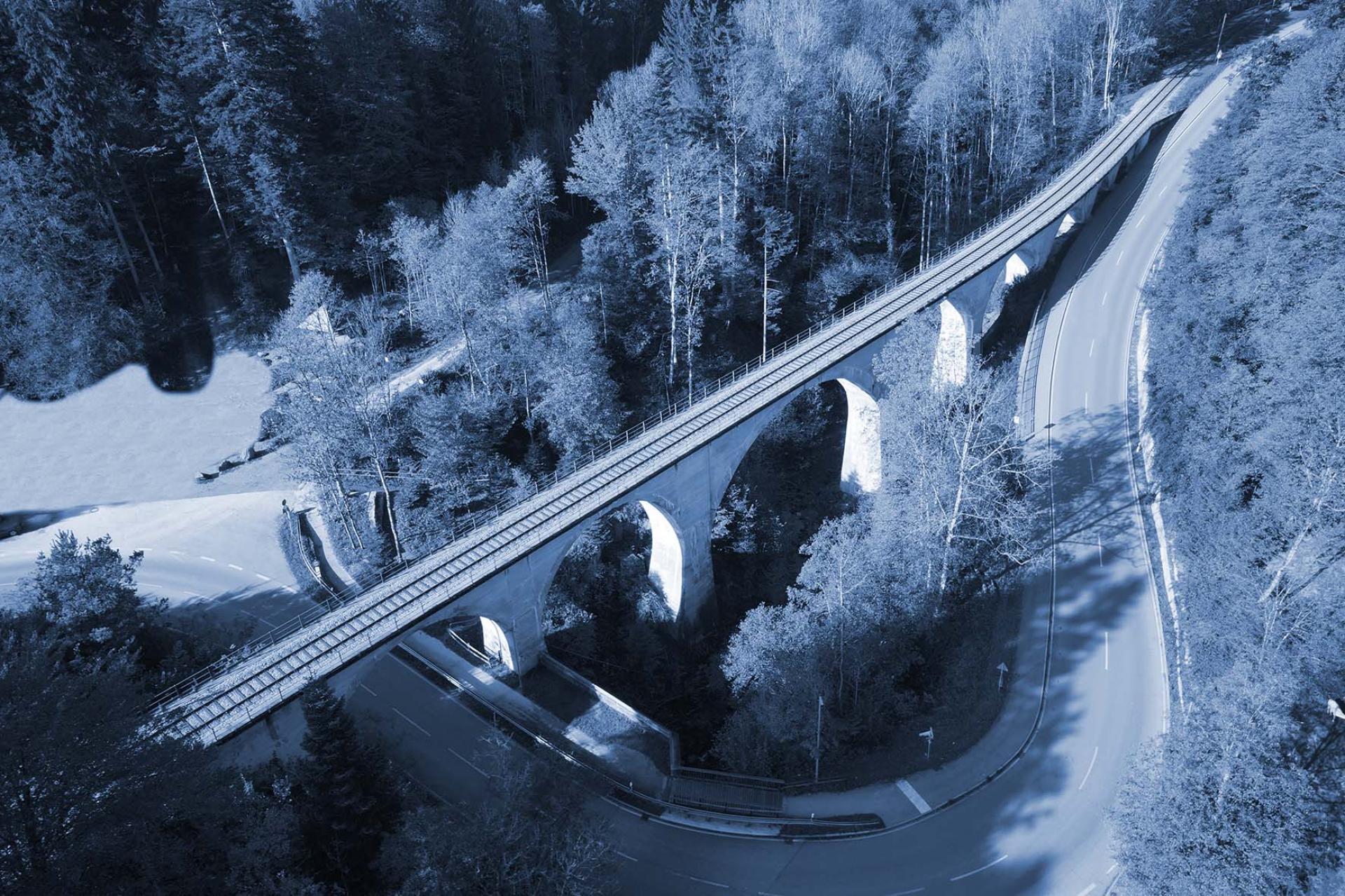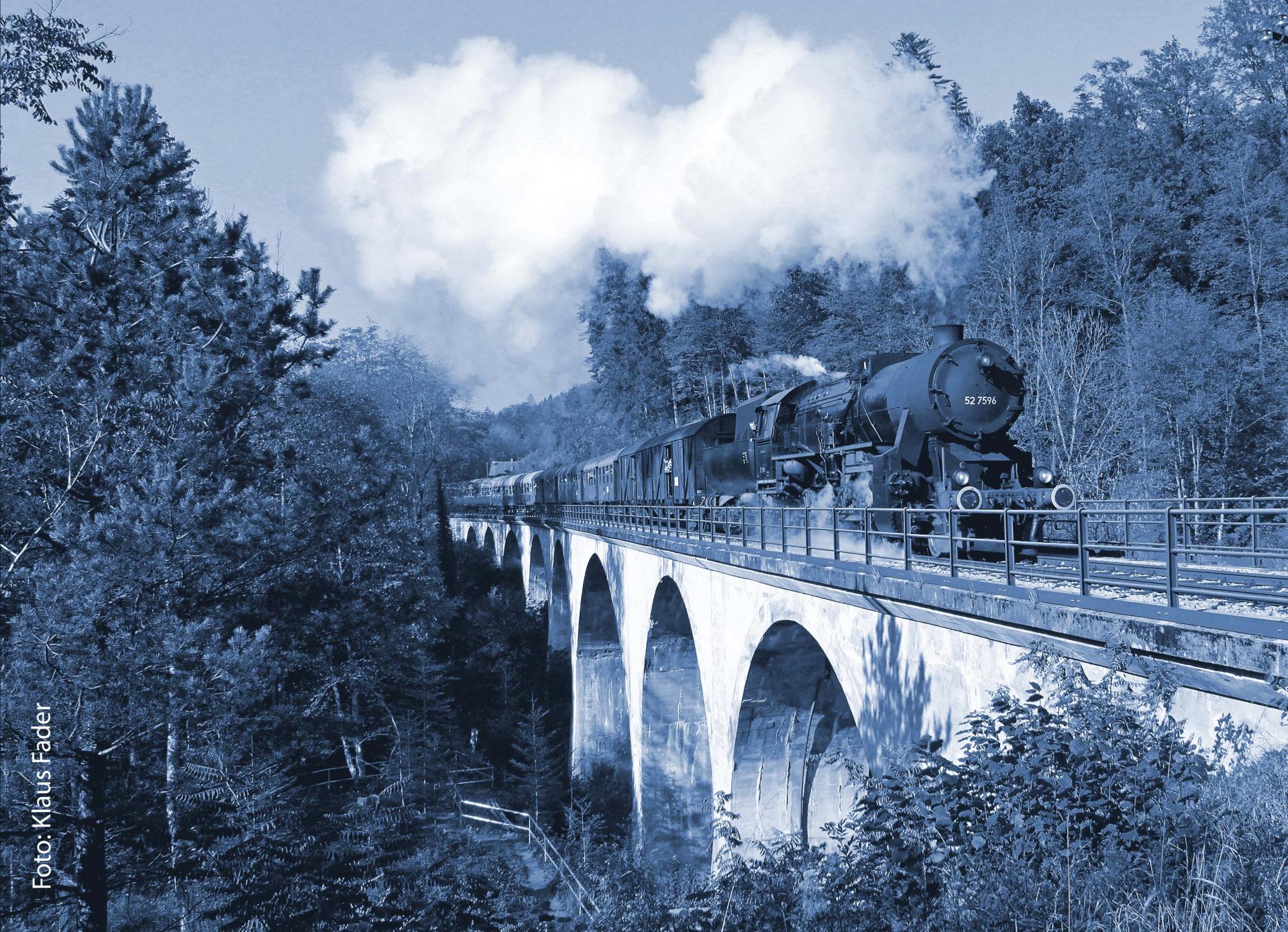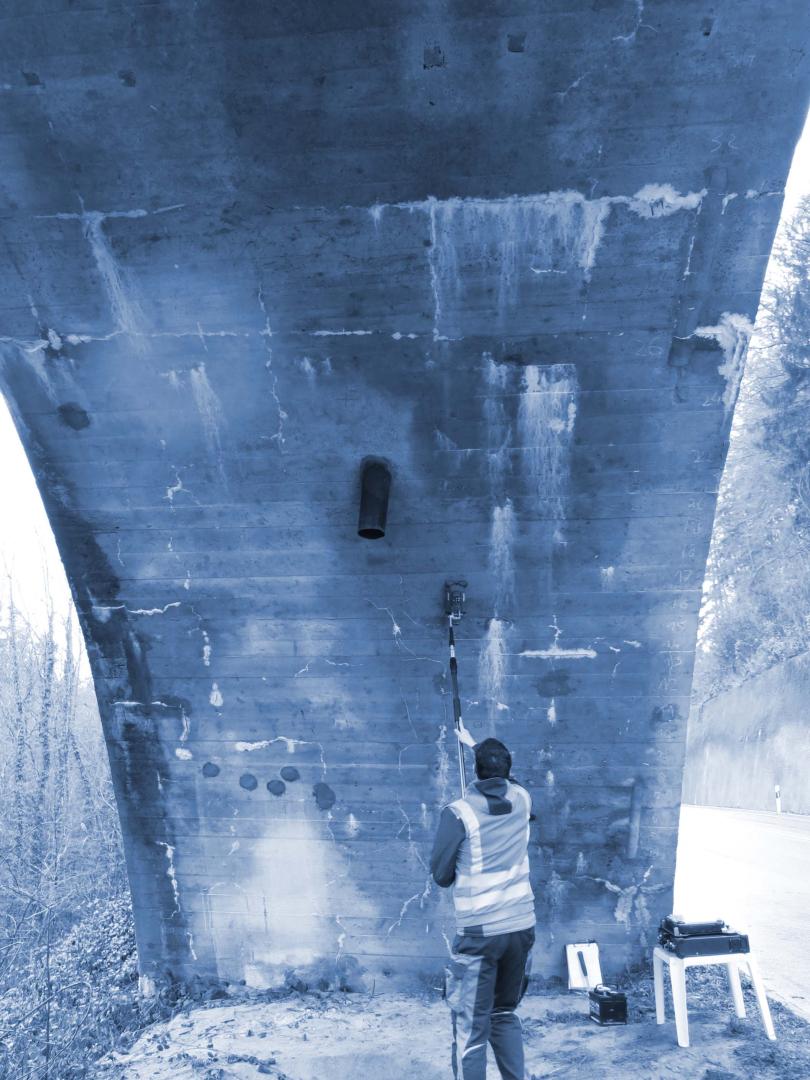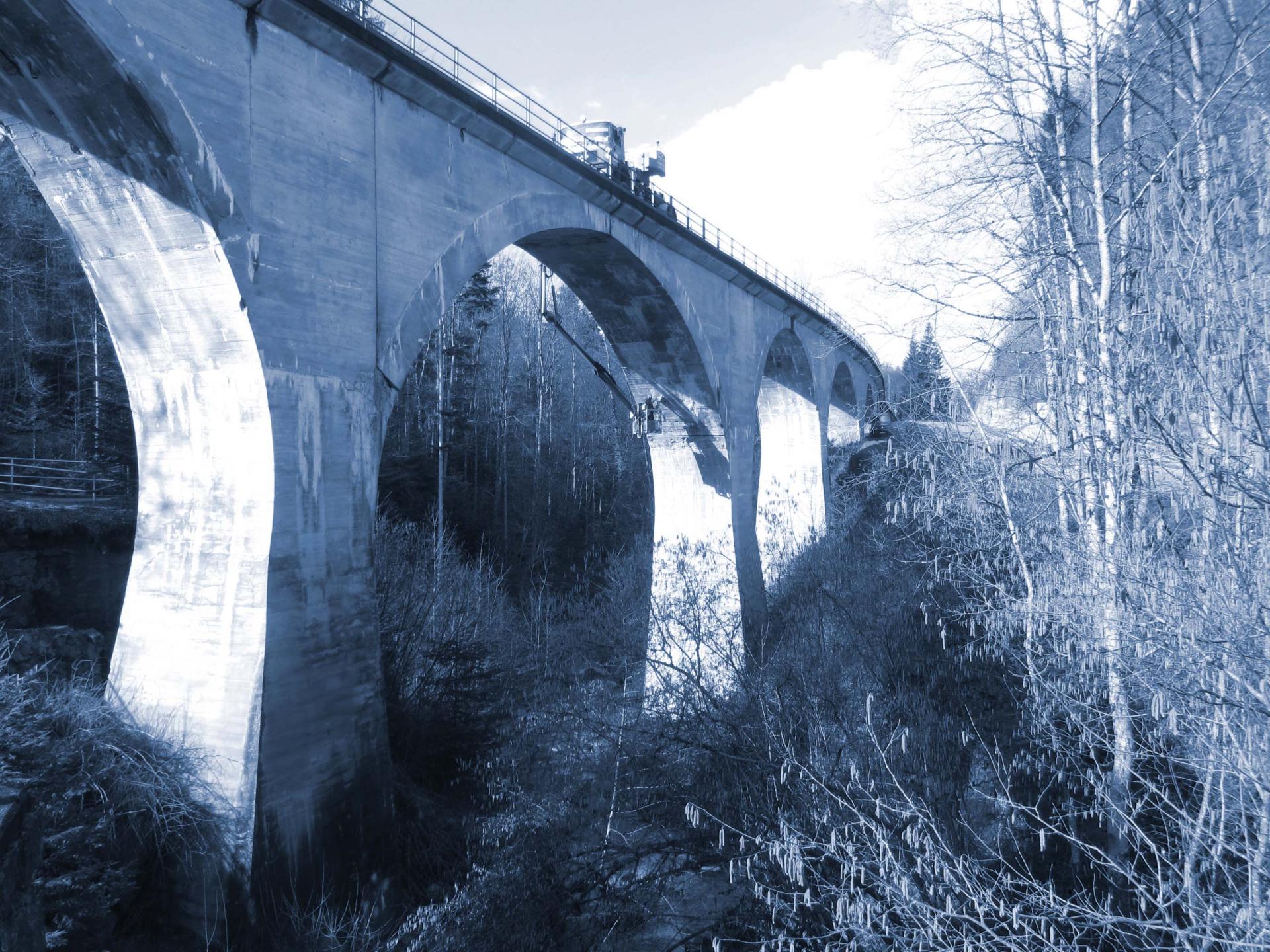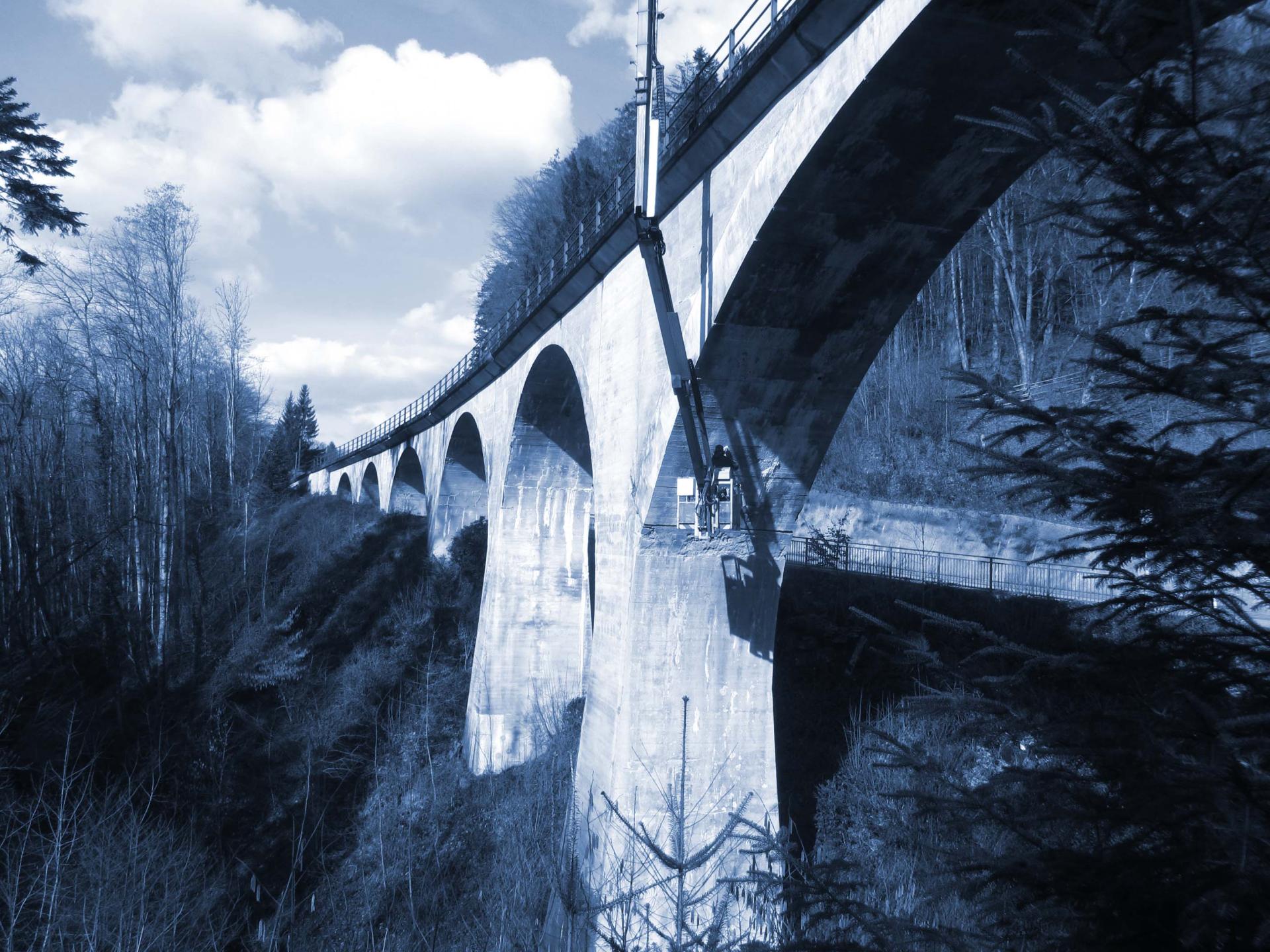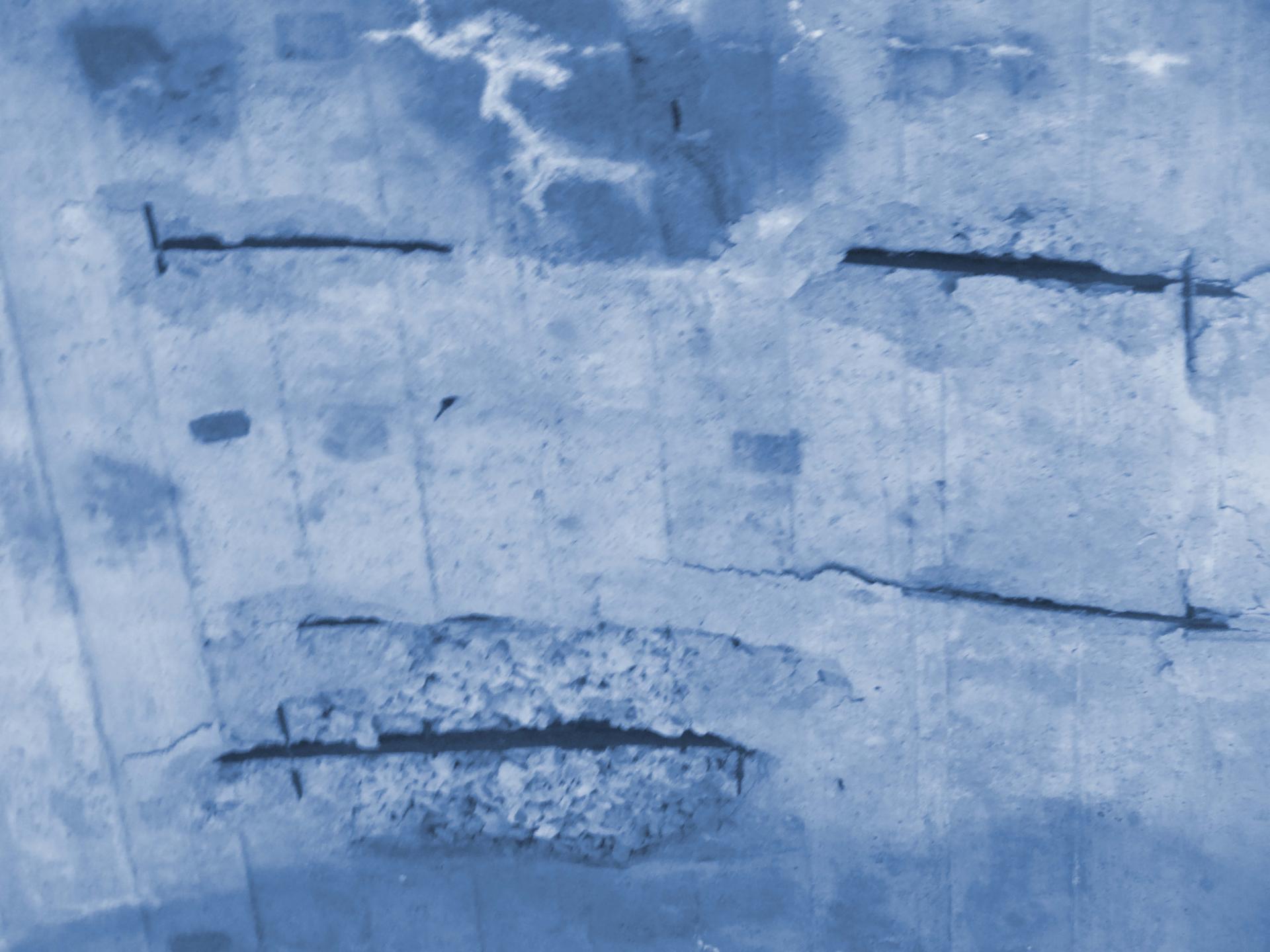Laufenmuehle-Viadukt
Basic information
Project Title
Full project title
Category
Project Description
Since the end of the 19th century, the railway has been significant for the development and integration of European countries. Therefore, the first railway bridges and viaducts are essential parts of the European industrial revolution and outstanding examples of developments in civil engineering. With an innovative and sustainable rehabilitation concept, the Laufenmuehle Viaduct could be preserved as part of the modern infrastructure and protected from future impacts caused by climate change.
Project Region
EU Programme or fund
Description of the project
Summary
The project's aim was the sustainable restoration of the Laufenmuehle Viaduct in accordance with the rules of preservation. The ensemble of Igelsbach-, Struempfelbach- and Laufenmuehle Viaducts is one of the first reinforced concrete structures in Germany and an outstanding example of infrastructure from the early days of 20th century. Therefore, it has been a listed monument since 1992. Due to visible structural damages, the owner commissioned an engineering office to develop restoration concepts.
The engineer concluded from the first condition analysis carried out and its evaluation according to modern renovation regulations that the viaduct was in a desolate condition and recommended partial demolition as well as structural strengthening with modern concrete components. This would have completely destroyed the character of the viaduct. To avoid this, the town of Welzheim and the private association as operators of the museum railway asked for a second opinion. In addition to KIT Innovation HUB, the Rothenhöfer engineering office and IONYS AG from Karlsruhe were involved.
The new concept developed by KIT HUB first required an inverse structural analysis to identify the critical points in the structure (Ing.-Büro Rothenhöfer) and to formulate minimum requirements for repair. Using modern methods of high-performance analytics, a targeted condition analysis with high spatial resolution was carried out to determine the need for repair (IONYS AG, Ing.-Büro Patitz). The results showed that the viaduct is in very good condition despite its age of around 110 years.
By means of local injections, the structure could be repaired sustainably and according to regulations. Subsequently, the success of the measure was confirmed by quality control. Furthermore, the costs were reduced from 3.3 million euros to 2.2 million euros and the project was completed on schedule.
Key objectives for sustainability
In general, the aim of the KIT HUB is to extend the maintenance-free service life of infrastructure structures from the real duration in practice of approx. 20-30 years to the planned service life of 80-120 years. Avoidable repairs due to chemically induced damage are technologically complex and associated with high financial costs and environmental pollution. The CO2 release from a repair alone is up to three times higher than the impact of the original construction. That is why our credo is: durable building is sustainable building.
The first core objective was therefore to make it clear to today's decision-makers from business, administration and politics, but also to citizens, that the historic infrastructure is still a functioning part of the transport infrastructure today and must be preserved for this reason. However, it is also a "living cultural heritage" and part of European cultural history that must be preserved for future generations.
The second core objective was the development of scientifically based maintenance and repair concepts for the entire infrastructure to improve its sustainability. The average life span of a standard repair measure is about 10 years, during which time 80 % of the structures fail again. These new repairs are, of course, again associated with economic and ecological burdens. The reasons for this unsatisfactory situation lie mainly in the lack of scientifically sound concepts for condition analysis and quality control, which we have further developed within the framework of this project.
The third core objective was to develop preventive measures to protect historic and modern infrastructure from the effects of climate change. Many building materials are already failing prematurely due to exposure to rising temperatures. Given the scale of the infrastructure, the CO2 release rates attributable to repair measures cannot be neglected in the context of EU or UN climate targets.
Key objectives for aesthetics and quality
The Laufenmuehle viaduct was built around 110 years ago from "iron-reinforced concrete". The wooden formwork provided an object-specific surface structure. Due to the natural ageing processes (e.g. exposure to CO2), but also as a result of an undesired water transport through the construction, the concrete surface acquired a patina that should be preserved at all costs.
The original renovation concept was to support the original arches with new arches made of modern reinforced concrete. The historic arches would have become a "double arch" consisting of the old arch and the new arch. The appearance would have changed dramatically and the monument would have been lost.
In the first step, we identified critical areas with preliminary investigations ("hot spots"). “Hot spots” were cracks, cavities or gravel pockets inside the structure. The location and depth of these "hotspots" were precisely recorded using the radar method. This was important for minimally invasive interventions. Using special mortars, adapted to the material properties of the historic concrete, it was possible to inject these voids with pinpoint accuracy and thus fill them. Open cracks were repaired locally. The success of the measures was checked by renewed radar measurements and only five spots still had to be reworked. As a preventive measure, a non-visible hydrophobic treatment was applied. In general, the success was determined by quality control.
Data from quality control can now be used to record changes regularly and at an early stage. Measures that are necessary here can be carried out in a way that is gentle on the building components. Compared to the original design, the appearance of the viaduct has remained almost unchanged and natural ageing will continue without jeopardising the future of the structure.
Key objectives for inclusion
Regarding inclusion, different levels can be distinguished, which are represented by three target groups. Participants aspired to inclusion within these three groups, but also between the groups. A communication concept was developed for this purpose.
The first target was to bring together the scientific (KIT HUB, IONYS AG) and engineering project partners (Ing. BWN, Ing. Rothenhöfer, Ing. Patitz) into a team in order to create a jointly developed remediation concept supported by all. To achieve this, numerous workshops were held in which the experts explained in detail to all project partners what their goals were and how they could be achieved through scientific and technical measures. Intensive knowledge transfer of this kind created a deep understanding of the overall project among everyone. Through this clarity, a kind of "check and balance" was also implemented in the project, which drastically reduced the risks of errors in the execution.
The second target group was the town of Welzheim as the owner of the viaduct and the Förderverein Welzheimer Bahn e.V., which supports the railway operation through voluntary work. During the project, the second group was directly involved in the development and provided important historical data on the Laufenmühlen Viaduct, without which a successful renovation would not have been possible. Deep trust was built during the collaboration, which also alleviated fears of budget overruns.
The third group was the political leadership of the municipality, represented by the mayor and the municipal council. Technical information presented to the council also created confidence in the technical feasibility and the calculated costs. That trust was not disappointed, leading to a high level of acceptance for engineering approaches to infrastructure rehabilitation.
Results in relation to category
The most important result of this project is the preservation of the Laufenmühlen viaduct for at least the next 50 years as a monument to the development of technical infrastructure in the 20th century.
The combination of scientific methods and engineering approaches as a basis for the sustainable repair of historically important infrastructure, made with concrete. Due to the high level of information regarding the state of the structure, the repair costs and the duration of the measures were not only precisely calculated, but also actually adhered to.
Development of new repair methods and suitable materials on the basis of material-technological knowledge of the historical object. By selecting materials on the basis of historical sources, age-related material changes can be better recognised and matched to the repair material, which minimises the failure of rehabilitations on historically significant concrete structures.
Future effects on the structure as a result of climate change were already taken into account during planning and implementation. In addition to an applied surface protection system, a monitoring concept was developed to detect material changes and thus risks to the structure at an early stage. The resulting technical effort is low compared to the consequences of an undetected progressive damage mechanism.
A communication concept has been developed to facilitate discussion of the content between the various stakeholders in a rehabilitation project, especially for exchanges between the people responsible for the technology and the political decision-makers. The communication of sound technical knowledge to policy makers is essential as a basis for their political decisions.
How Citizens benefit
The Swabian Forest Railway, of which the Laufenmühlen Viaduct is a part, has an identity-creating function for the citizens of the city of Welzheim. After its completion in 1911, this railroad connected Welzheim to the "rest of the world". This is still in the consciousness of the citizens today. Later, the city of Welzheim took over this line and has been using it as a museum railroad since 2010. This tourist attraction has led both to a higher level of awareness of the city of Welzheim and to an improved economic situation for local businesses. For example, a social institution is run in the immediate vicinity of the viaduct, generating income from the sale of handmade products. The development of the museum railroad required considerable investment from the municipality, but was supported by the local council and the citizens.
Citizens were all the more alarmed when it became clear in 2015 that investments in the millions would be required for the renovation of the Laufenmühlen viaduct. The closure of the forest railway was within the realm of possibility at that time. The aim of the project was therefore not only to preserve the historic structure, but also to minimise the financial burden for the citizens and their community.The citizens were directly involved in the project through the Welzheimer Bahn e.V. development association and the local council. Thus, members of the association and the mayor of Welzheim were involved in the project development at all times. Particularly valuable were historical data on the Laufenmühlen Viaduct and the commitment of older Welzheim citizens who could give us information from their own experience. Both were an indispensable basis for the renovation of the structure. During the construction work, which took place under regular traffic and thus minimised the financial loss for the municipality due to shutdowns, there were regular visits to the construction site by citizens who informed themselves about the measure on site.
Innovative character
The innovative aspect of this project was the development of a renovation concept adapted to the needs of the Laufenmühlen Viaduct. The focus was on preserving the character of the monument and its functionality. To achieve this, an alternative rehabilitation concept had to be developed that was not based on modern sets of rules, but on the results of a scientifically and technically based approach. In simple words: a multi-stage, transparent and consistent approach outside the classical set of rules.
The starting point was a scientific literature research on the procedure and implementation of listed building maintenance and renovation. Based on these findings, the second step was to carry out a so-called inverse static analysis of the structural stability of the building and to identify "hot spots" on the basis of the structural analysis. A concept for a well-founded and adapted condition analysis was developed and carried out: on the one hand, through the use of non-destructive high-tech testing methods and targeted sampling on the other, as well as the correlation of the results - this was completely new in this context. Based on the data collected, a repair concept was developed for the existing damages and the measures were carried out by experts. Furthermore, a quality control was established using the non-destructive methods of condition analysis for quality assurance. Finally, a maintenance, prevention and monitoring concept explicitly tailored to the structure was developed, which already takes into account future negative effects of the emerging climate change.
Innovative was the development of a communication concept that linked the actors of this project, the building experts, the public administration, the mayor and the municipal council, but also the citizens, and led a public discourse.

